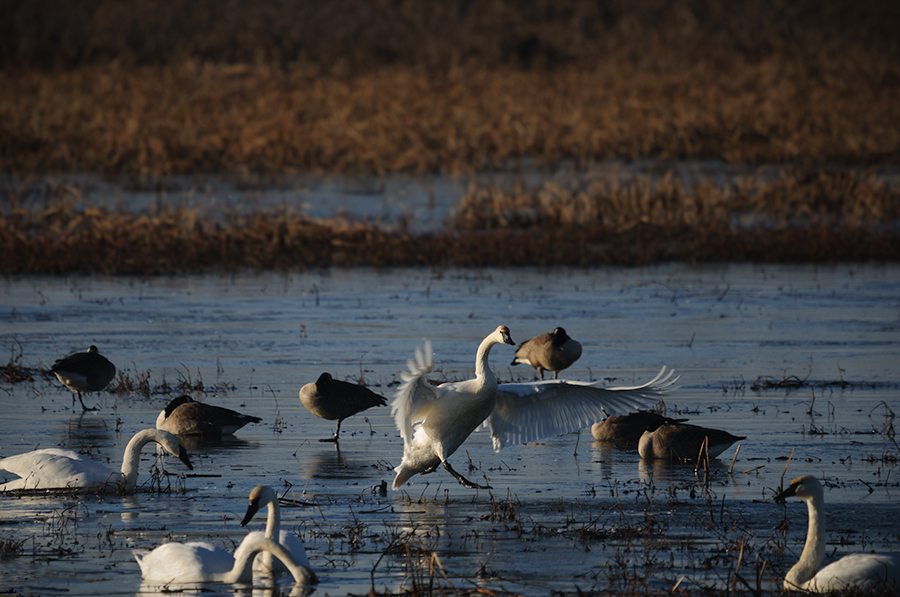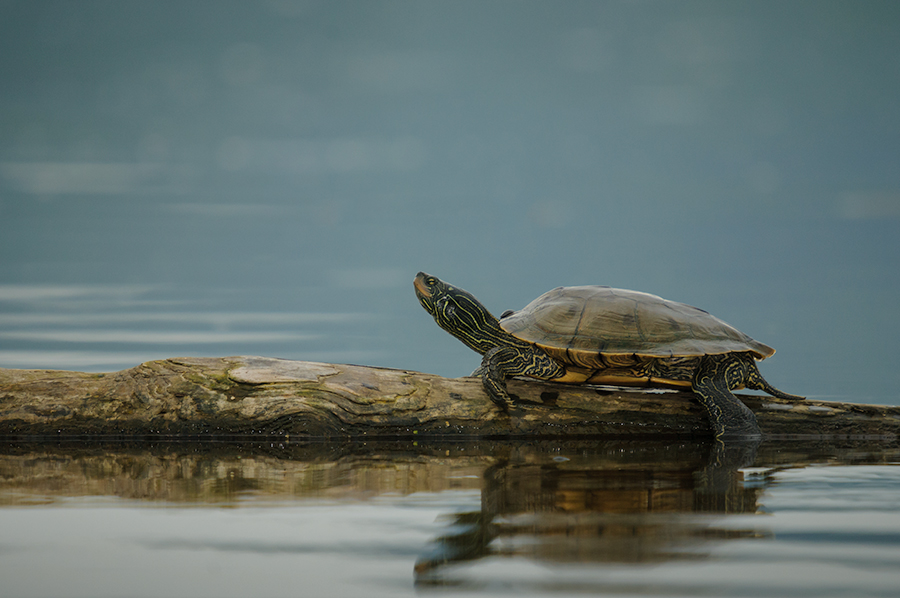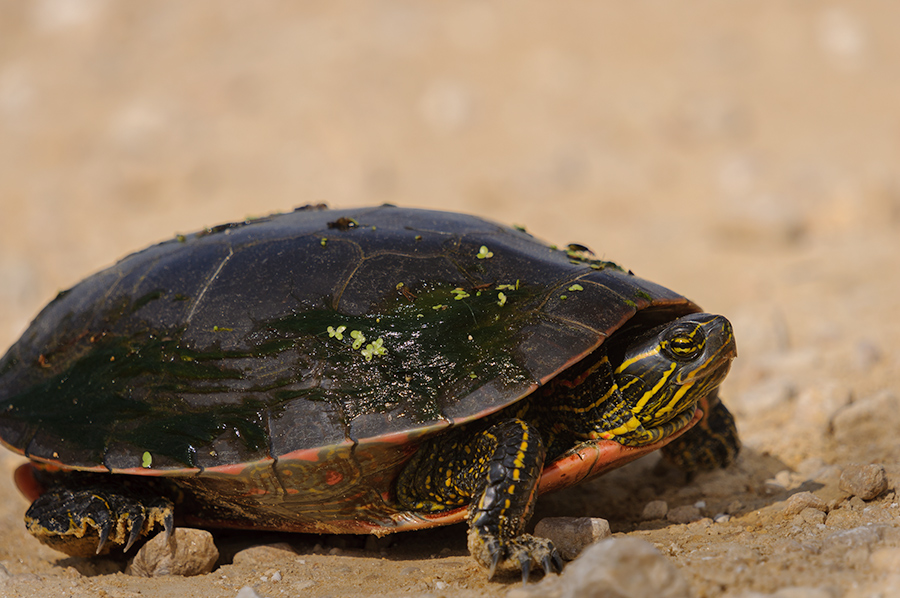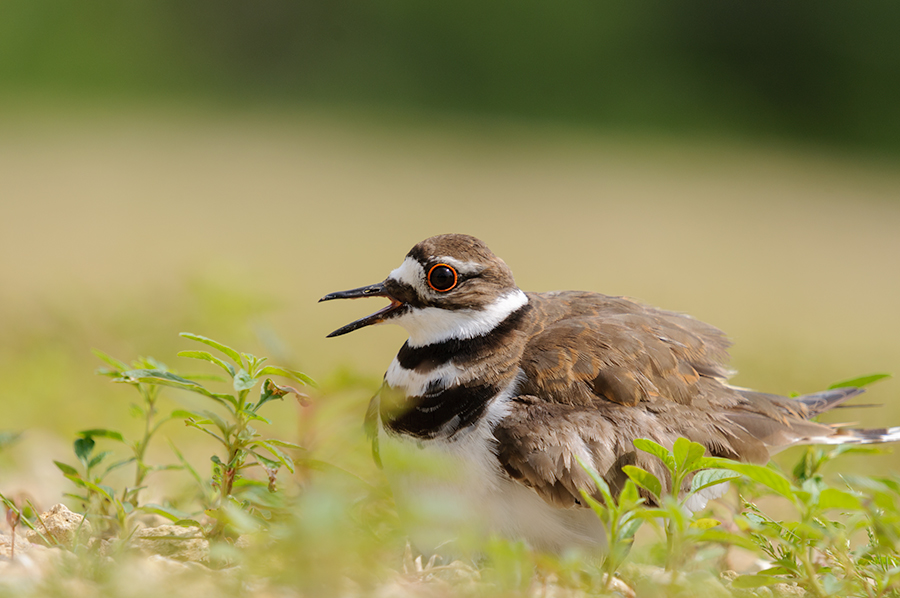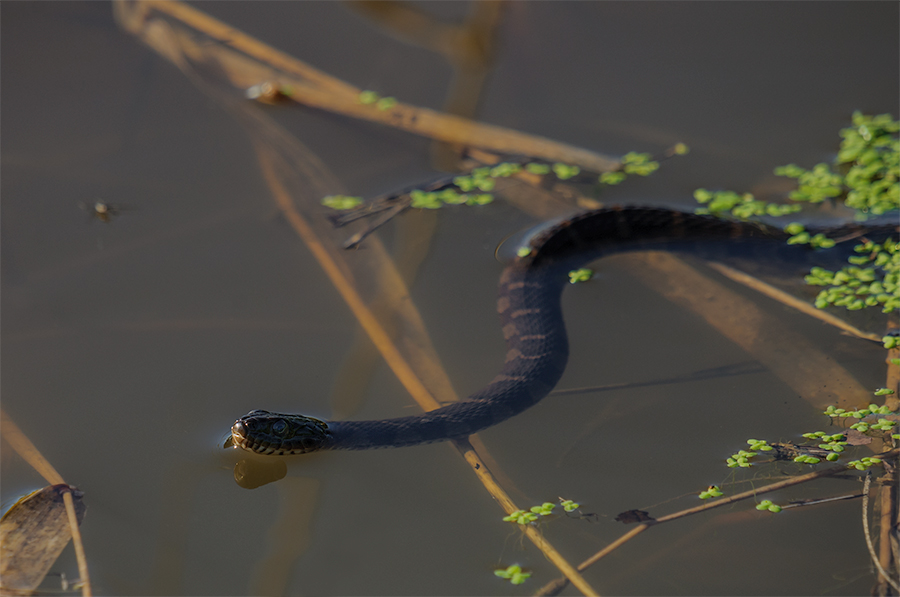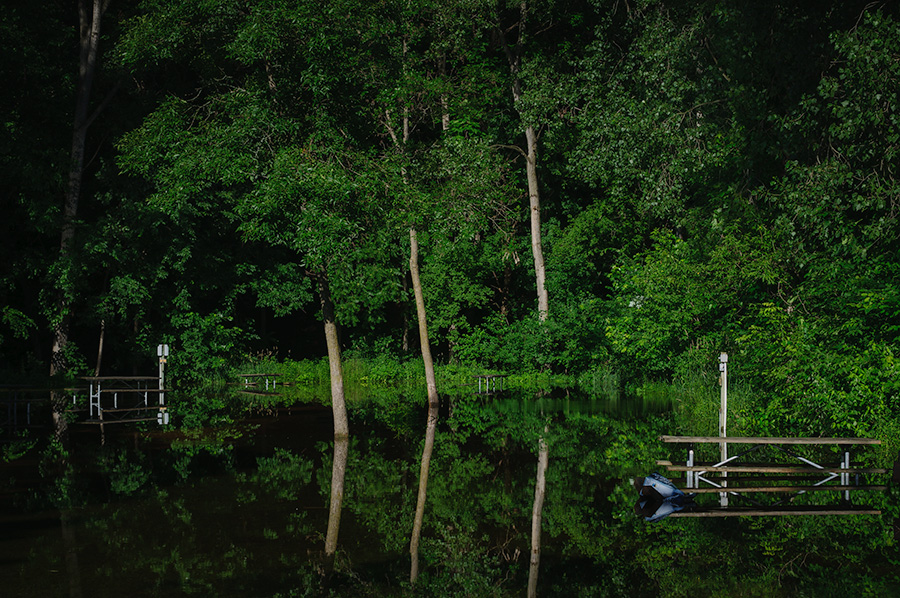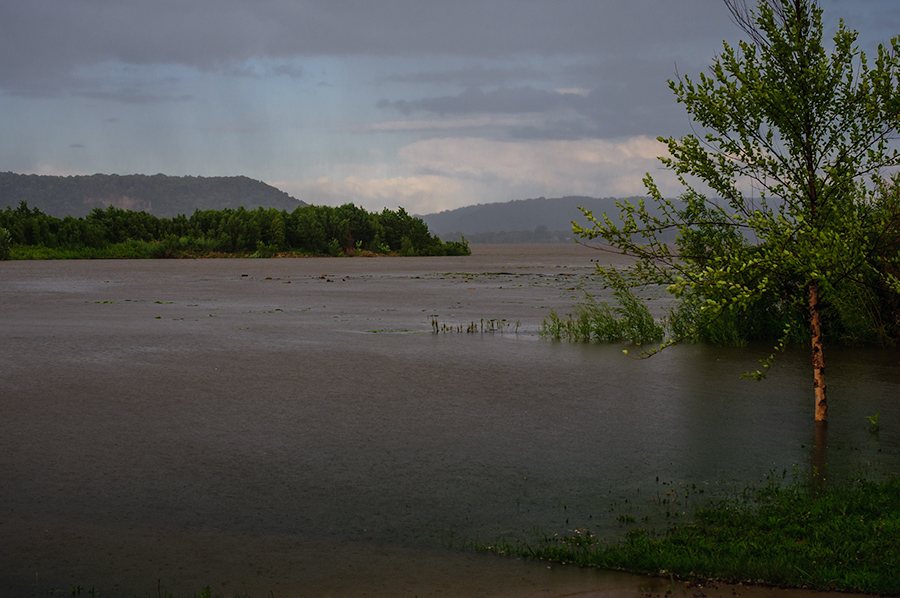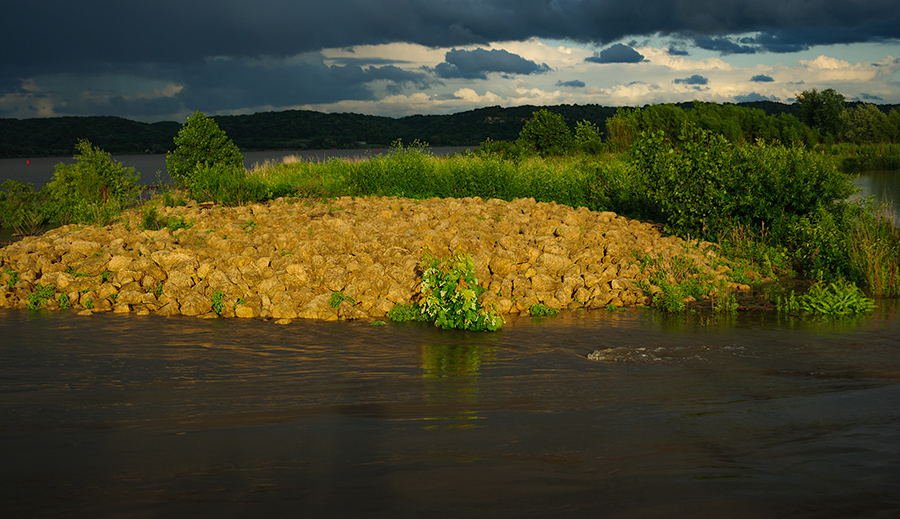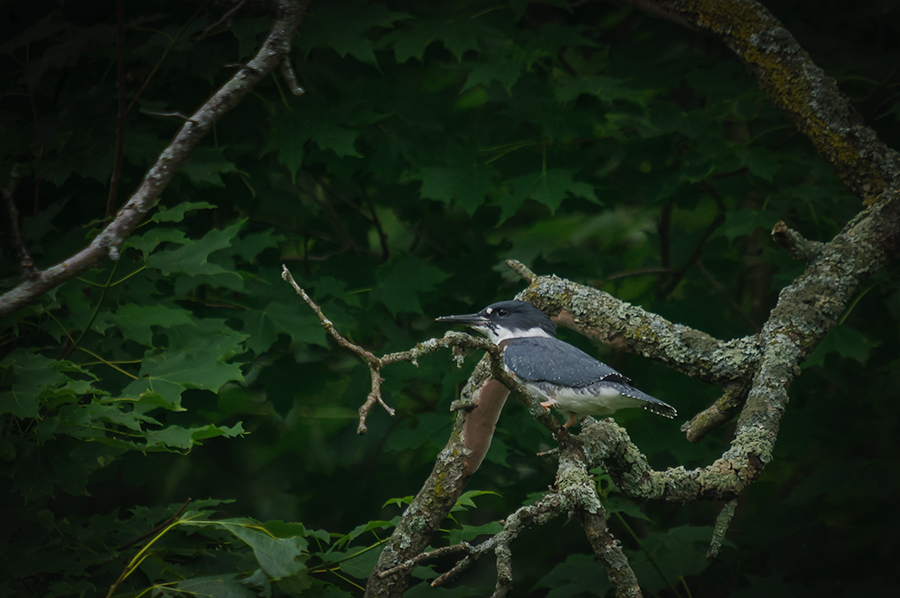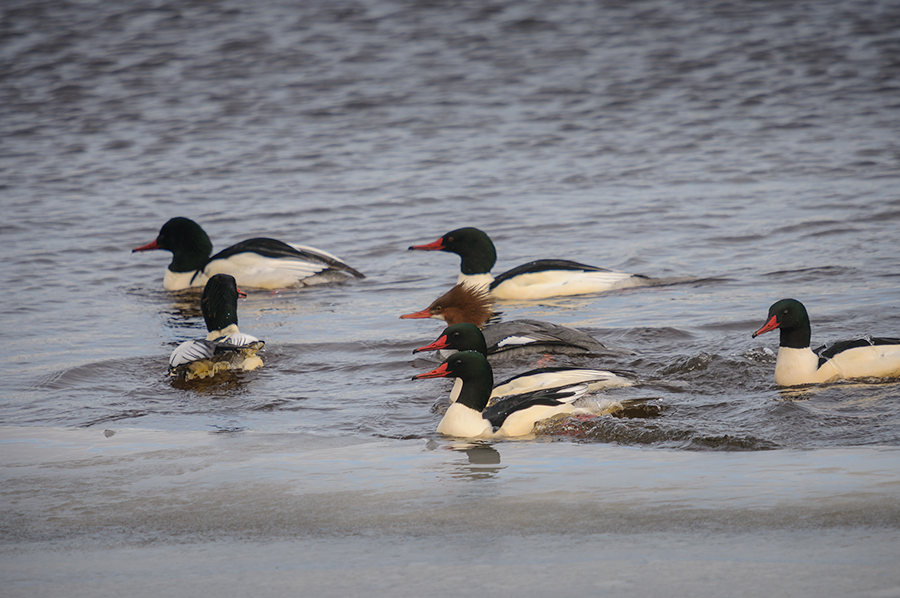
I wish all visitors, friends, and followers of my blog a happy, safe, and creative year 2015!! Thank you for stopping here during the last year. Your comments, critique, and encouragement mean a lot to me and keep me writing this little journal about nature and photography.
We had a nice start into the new year with our friends Jeanne and Dave. Good conversation and playing some games made for a fun New Year’s Eve. Unfortunately Joan had to work today so I dragged myself out of the house on my own this morning. ;-) I went south along the Mississippi and just tried to spot some wildlife. The temperatures were way below freezing during the last few days and there was a lot more ice on lakes and rivers.
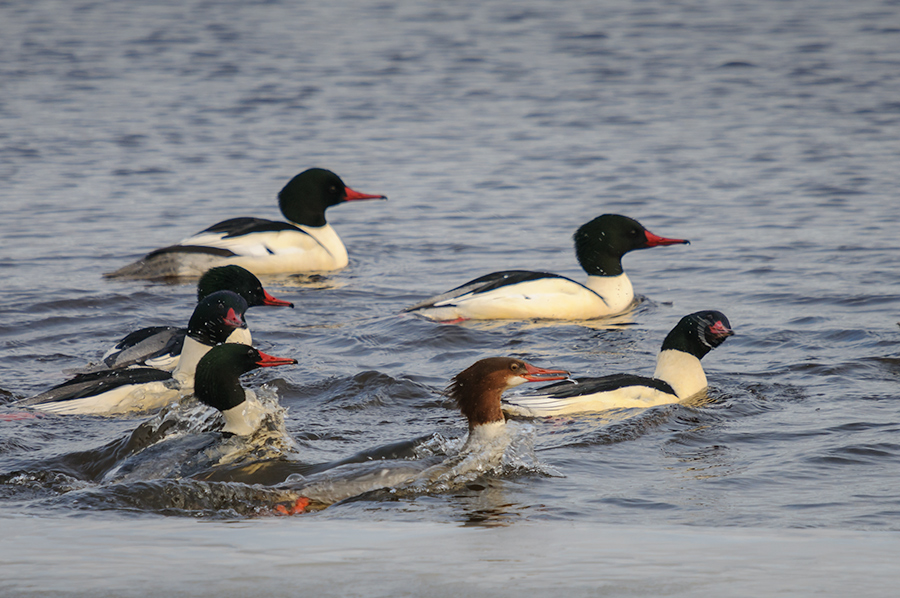
I found what I was looking for in Sabula, Iowa, a small town on an island in the Mississippi River. There were lots of Common Mergansers in the water. I positioned the “mobile blind” (my car) near the narrow entrance to the city’s marina. The marina was frozen over while the main channel of the river was still free of ice. The mergansers were hunting for fish by diving underneath the ice. It was fun to watch how they approach the edge of the ice in groups, dive under, and return, with or without fish, after a few seconds.
For me there is no better start into a new photography year than coming back already from the first trip with a memory card full of bird images. I wouldn’t mind if this continues throughout the year… ;-)

